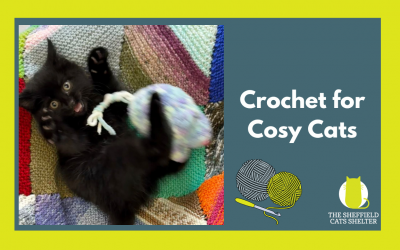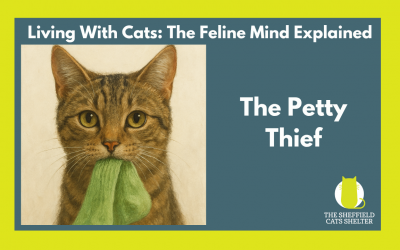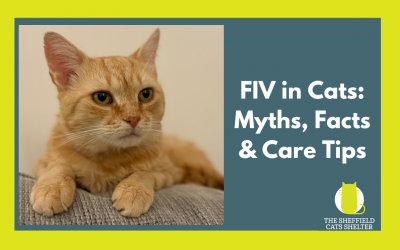Today, we shed some light on one of the less glamorous sides of pet parenting: the infamous hairball. Whether you’re a cat lover, a vet, or just here for the fur-flying facts, join us as we unravel the mystery behind those furry little cough-ups and how to keep your feline friends happy (and hairball-free)!

What Causes Hairballs in Cats?
Hairballs might be icky, but they’re a normal part of your cat’s grooming routine. When cats groom, they swallow loose fur, which usually passes through fine. But sometimes it builds up in the stomach and is vomited out, usually looking more like a tube than a ball. Long-haired breeds and heavy groomers are more prone to hairballs. While mostly harmless, frequent or troublesome hairballs can signal an issue, so contact your vet if you’re concerned.

Recognising Hairball Symptoms in Cats
It can be a bit unsettling to watch (or hear) your cat cough up a hairball.
Some common signs to look out for include:
• Hacking or coughing
• Gagging
• Retching
In most cases, these sounds are followed by your cat vomiting up the hairball.
Do Cats Make Noises When They Have a Hairball?
Yes, many cats cough, gag, or retch just before bringing up a hairball. Some may even cry or howl right before they vomit.
Signs Your Cat Might Be Having Hairball Trouble
While you might not need to worry about the occasional hairball, there are some instances in which you should see your vet. It’s rare, but hairballs can grow so large that your cat can’t pass them, or they can get lodged in the digestive tract, creating a blockage. If the hairball is too large, surgery may be required to remove it.
You should see your vet right away if your cat:
- Frequent gagging, retching, or hacking
– Especially if your cat isn’t actually bringing up a hairball. - Loss of appetite
– A sign that something may be blocking the digestive tract. - Lethargy or unusual tiredness
– If your usually active cat is suddenly low-energy, it could be more than a hairball. - Constipation or diarrhea
– Digestive issues can indicate a blockage caused by fur buildup. - Swollen or tender abdomen
– This could signal a more serious intestinal blockage. - Dry heaving or vomiting without producing anything
– Repeated unproductive attempts to vomit are a red flag. - Changes in behaviour or mood
– Hiding, irritability, or general discomfort can be subtle signs that something’s wrong.
How to Prevent Cat Hairballs
Nothing can be done to totally prevent hairballs in cats, but there are things you can do to reduce the likelihood of your cat having hairballs or to reduce their frequency.
Regular Grooming
Regular grooming is essential for your cat’s health. The more loose fur you remove through brushing or combing, the less ends up in their digestive system as hairballs. Regular grooming not only helps reduce hairball formation but also offers a great opportunity to strengthen the bond between you and your cat.


Try cat food formulated for hairballs
If your cat brings up hairballs regularly, consider switching to a food specifically formulated to help reduce the issue. Many cat food brands have a product to deal with hairballs. The formulas typically include things such as increased fiber, oil, minerals, and vitamins that can help the swallowed hair pass through the digestive system naturally.
Discourage excessive grooming
If your cat is over-grooming, you might notice thin or patchy fur, bald spots, or even irritation and damage to the skin underneath. They may groom excessively, bite, or chew at their fur, often in a way that’s hard to interrupt. Over-grooming can be a sign of an underlying issue, so it’s best to check with your vet to find out the cause and how to help manage it.
Remove any remaining loose fur
After brushing your cat, wipe them with a fragrance-free, hypoallergenic baby wipe. Alternatively, you can use a damp paper towel. A moist cloth helps remove any remaining loose fur, which helps reduce the amount that ends up in your cat’s stomach, lowering the risk of hairballs.
Increase water intake
If your cat eats dry food, their diet likely isn’t providing enough water to meet their hydration needs. As such, their digestive system may not be able to function as well as it should.
Offer your cat multiple clean, fresh water sources. Many felines prefer running water to still, and they may not like the smell or taste of tap water. You might consider getting your cat a water fountain to get them to drink more. Canned food may also provide enough hydration to help keep the digestive system moving properly, reducing the risk of hairballs.
How do I brush a cat that hates being brushed?
If your cat dislikes being brushed, it’s crucial to be patient and gradual when introducing brushing into their routine. Start by letting them get used to the brush and then slowly increase the duration and area you brush. Focus on positive reinforcement, such as treats and praise, to make brushing a positive experience.
Here’s a step-by-step approach:
- Start with a positive association: Let your cat sniff and get used to the brush, then offer a treat.
- Gradual introduction: Begin with a few strokes on the back and slowly increase the area over time.
- Listen to your cat: If they start to show signs of discomfort, stop and return to a previous stage.
- Positive reinforcement: Reward your cat with praise and treats for tolerating the brushing.
- Short sessions: Keep brushing sessions short, especially in the beginning, to avoid overwhelming your cat.
- Consider pheromones: If your cat is anxious, a diffuser with calming pheromones might help.
- Professional help: If you’re struggling, consider consulting a veterinarian or a professional groomer.
By being patient, understanding, and focusing on positive reinforcement, you can gradually help your cat become more comfortable with being brushed.

Final Thoughts
Hairballs might be a messy part of cat ownership, but they’re also a natural result of your cat’s grooming habits. With regular brushing, a healthy diet, and a watchful eye, you can help keep hairballs to a minimum. If you ever notice anything unusual, your vet is the best person to help.
Let’s use National Hairball Awareness Day as a reminder to give our feline friends a little extra care, starting with a good brush and maybe a treat or two!





